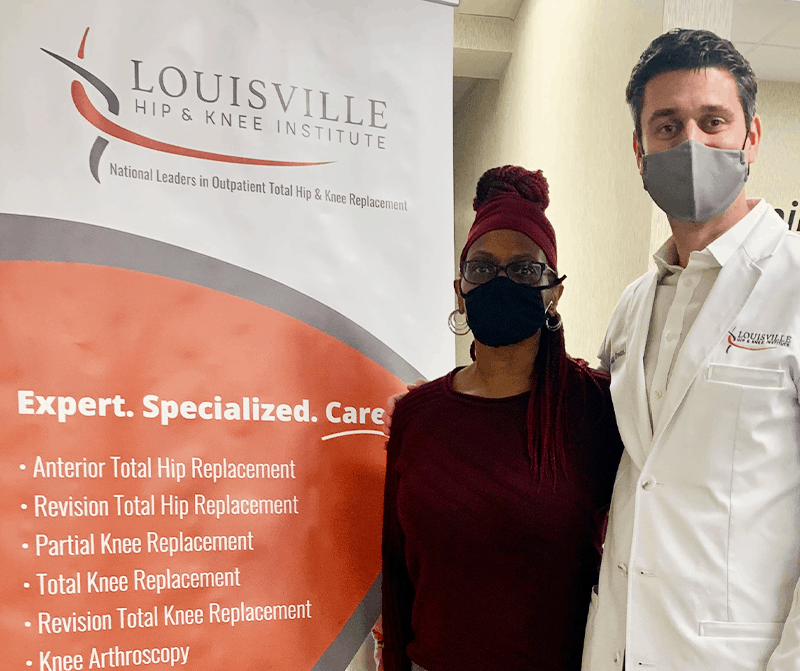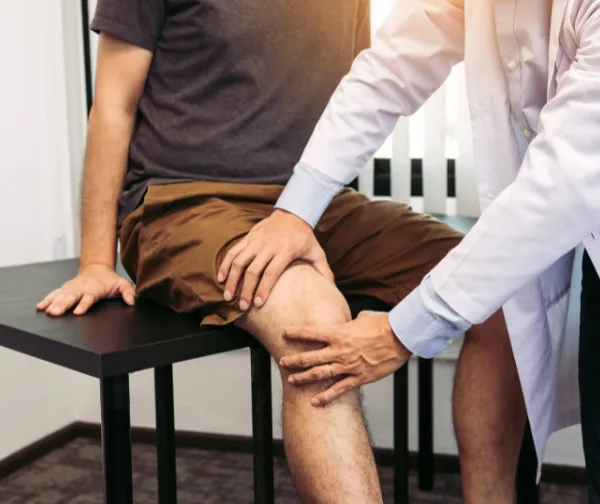
Meniscus Tear: Symptoms,
Treatment, and Recovery
Overview of the Meniscus
A meniscus tear is one of the most common knee injuries, often seen in active individuals. The meniscus is a C-shaped piece of cartilage in the knee that acts as a shock absorber between the thighbone (femur) and shinbone (tibia). Each knee has two menisci—one on the inner (medial meniscus) and one on the outer (lateral meniscus). A torn meniscus can cause pain, swelling, and limited mobility, significantly impacting your daily activities. A meniscus tear is one of the most common knee injuries, affecting people of all ages and activity levels. A torn meniscus can cause pain, swelling, and limited mobility, significantly impacting your daily activities.
Causes of a Meniscus Tear
Meniscus tears are typically caused by one of two main factors:
- Acute Injury: Often occurs during activities that involve twisting or rotating the knee, such as in sports like basketball, soccer, or tennis. Sudden stops, deep squatting, or awkward landings can also lead to a tear.
- Degenerative Changes: As we age, the cartilage in the knee becomes weaker and less flexible, making it more prone to tearing. This type of tear is common in older adults and often occurs with minimal stress or activity. Meniscus tears are typically caused by one of two main factors.

Symptoms of a Meniscus Tear
Common symptoms of a meniscus tear include:
- Pain: Localized on the inner or outer side of the knee.
- Swelling: May develop over a few hours or days.
- Stiffness: Difficulty moving the knee fully or comfortably.
- Catching or Locking: The knee may catch, lock, or feel unstable during movement.
- Popping Sensation: A “pop” may be felt during injury.
- Instability: Feeling like the knee may give way.
Types of Meniscus Tears
Meniscus tears are classified based on their pattern and location. Meniscus tears are classified based on their pattern and location:
- Bucket Handle Tear: A large tear that causes a portion of the meniscus to fold into the joint, often leading to knee locking.
- Flap Tear: A small piece of the meniscus becomes loose and catches in the joint.
- Radial Tear: Starts at the inner edge and disrupts the meniscus’s ability to absorb shock.
- Degenerative Tear: Associated with wear and tear over time.
Diagnosis of a Meniscus Tear
To diagnose a meniscus tear, your doctor will:
- Take a Medical History: Discuss your symptoms and how the injury occurred.
- Perform a Physical Exam: Look for tenderness, swelling, and range-of-motion limitations. Specific tests, such as the McMurray test, may be used to check for a tear.
- Order Imaging Tests. An X-ray may rule out other injuries, while an MRI provides a detailed view of the knee’s soft tissues and confirms the presence and type of tear.
Treatment Options for a Meniscus Tear
Treatment for a meniscus tear depends on the tear’s size, location, and severity, as well as your age, activity level, and overall health.
Non-Surgical Treatments:
- Rest, Ice, Compression, Elevation (RICE): To reduce pain and swelling.
- Medications: Over-the-counter pain relievers such as ibuprofen.
- Physical Therapy: Strengthening surrounding muscles to improve knee stability.
- Knee Braces: Providing support to prevent further injury.
Surgical Treatments: If the tear does not heal with conservative measures, surgery may be necessary:
- Meniscus Repair: Suturing the torn cartilage if the tear is in a vascularized area.
- Partial Meniscectomy: Removing the damaged portion of the meniscus.
- Total Meniscectomy: Rarely performed, involves removing the entire meniscus. Treatment for a meniscus tear depends on various factors.
Treatment for a meniscus tear depends on the tear’s size, location, and severity, as well as your age, activity level, and overall health.

Recovery and Rehabilitation of a Meniscus Tear
Recovery depends on the treatment approach:
- Non-surgical: Usually involves a few weeks of rest and rehabilitation.
- Surgical: Recovery time varies, with meniscus repair requiring longer rehabilitation (3-6 months) compared to partial meniscectomy (4-6 weeks).
A structured physical therapy program is essential to regain strength, flexibility, and range of motion, regardless of treatment type.
Prevention from a Meniscus Tear
While not all meniscus tears can be prevented, you can reduce your risk by:
- Strengthening muscles around the knee to provide better support.
- Maintaining a healthy weight reduces stress on the knee joint.
- Avoiding sudden, sharp movements that strain the knee.
- Wearing proper footwear during physical activities.
When to See a Doctor
Consult a Louisville Hip & Knee Institute provider if you experience:
- Persistent knee pain or swelling.
- Difficulty moving your knee or walking.
- A sensation of instability or locking in your knee.
Next Steps
At Louisville Hip & Knee Institute, our orthopaedic specialists are here to help you find relief from knee pain. Whether you need non-surgical care or advanced surgical solutions, we’ll guide you every step of the way. Schedule a consultation today and take the first step toward a pain-free life.


